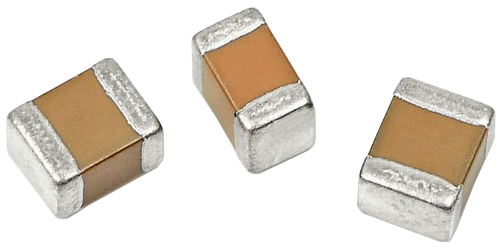What are the Functions of Multilayer Ceramic Capacitor?
The appearance of the chip capacitor is made of ceramics. So it is known as multilayer ceramic chip capacitor (MLCC). Multilayer ceramic capacitors are made of parallel ceramic materials and electrode materials. So what are the functions of multilayer ceramic capacitors?

Bypass
The bypass capacitor is an energy storage device that provides energy to the local device. It can make the output of the regulator uniform and reduce the load demand. Like a small rechargeable battery, the bypass capacitor can be charged and discharged to the device. To minimize impedance, bypass capacitors should be placed as close as possible to the power supply and ground pins of the load device. This is a good protection against ground potential rise and noise caused by excessive input values. Ground potential is the voltage drop across the ground connection through a high current glitch.
Decoupling
In terms of circuits, a distinction can always be made between the source being driven and the load being driven. If the load capacitance is relatively large, the driving circuit needs to charge and discharge the capacitor to complete the signal transition. When the rising edge is relatively steep, the current is relatively large, so the driving current will absorb a large power supply current. The inductance and resistance (especially the inductance on the chip pins, which will produce version bounces), this current is actually a kind of noise relative to the normal situation, which will affect the normal operation of the front stage, which is called coupling.
The decoupling capacitor acts as a battery to satisfy the current change of the drive circuit and avoid mutual coupling interference. It will be easier to understand by combining bypass and decoupling capacitors. Bypass capacitors are actually decoupled, but bypass capacitors generally refer to high-frequency bypassing, which is to improve a low-impedance leakage prevention path for high-frequency switching noise. The high-frequency ceramic capacitor is generally small, and is generally 0.1μF, 0.01μF, etc. according to the resonant frequency; while the capacity of the decoupling capacitor is generally larger, which may be 10μF or more, depending on the distribution parameters in the circuit and the change of driving current. Bypass is to take the interference in the input signal as the filtering object, and decoupling is to take the interference of the output signal as the filtering object to prevent the interference signal from returning to the power supply. This should be their essential difference.
Filter
Assuming that the universal capacitor is a pure capacitor, the larger the capacitance, the smaller the impedance and the higher the passing frequency. But in fact, most of the capacitors exceeding 1μF are electrolytic capacitors, which have a large inductance component, so the impedance will increase when the frequency is high. Sometimes you will see a large electrolytic capacitor connected in parallel with a small capacitor. At this time, the large capacitor will pass low frequency, and the small capacitor will pass high frequency.
The function of the capacitor is to pass high resistance and low frequency, and pass high frequency and block low frequency. The larger the capacitor, the easier it is for low frequencies to pass. Specifically used in filtering, the large capacitor (1000μF) filters the low frequency, and the small capacitor (20pF) filters the high frequency. Some netizens have vividly compared the filter capacitor to a "pond". Since the voltage across the capacitor does not change abruptly, it can be seen that the higher the signal frequency, the greater the attenuation. It converts changes in voltage into changes in current. The higher the frequency, the greater the peak current, thus buffering the voltage. Filtering is the process of charging and discharging.
Energy storage
The energy storage capacitor collects the charge through the rectifier, and transfers the stored energy to the output end of the power supply through the converter bow. According to different power supply requirements, the device sometimes adopts the form of series, parallel or combination. For the power supply with power level exceeding 10kW, the bulky can-shaped screw terminal capacitor is usually used.

